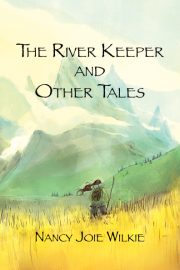Key Conditions for Reader Suspense:
Part 4 – Uncertainty
by John D. Brown
 The following is part of a continuing series. If you wish to start at the beginning, head to “It’s All About The Reader.”
The following is part of a continuing series. If you wish to start at the beginning, head to “It’s All About The Reader.”
Surprise
In my last post, I talked about the fact that for readers to feel suspense our character’s problem has to be hard to solve. But that’s only part of the equation. It has to be hard, sure, but the outcome has to also be uncertain. Otherwise, there’s no worry.
The character must have a chance to solve the problem up until the end, but for no extended period of time can it look like winning or losing is assured, because the moment the reader can predict the ending and the major turns along the way, that’s the moment they will lose interest.
Think about this. It’s the first quarter of a football game, and the score is 64 to 0. Anybody sticking around for that one to play out?
No, you can predict the ending. Why watch? Predictability kills hope, fear, and worry. It kills interest.
So how do we make sure the reader is uncertain of the outcome?
First, as stated before, we make the problem hard to solve. We’ll get into more specifics during the post on plot, but we make the problem harder to solve by giving our characters limitations, putting them into ongoing and continuing troubles, and making them face conflict with their own competing desires, other people in the story, and the setting.
But there’s another ingredient. The second thing we do is introduce surprise. Surprise is one of the vital elements in story making precisely because it makes things unpredictable. It makes hope, fear, worry, and curiosity possible.
There are two forms the surprise takes. The first is surprising or new limitations, troubles, and conflicts. New twists to the problem.
Maybe we’ve seen lots of stories about assassins who need to go behind enemy lines. But what if we add a surprising conflict. What if our character is asked to sneak in and kill his sister? Or his mother? Or his best friend? Or the teacher he loves?
What if our lead is not a highly-skilled CIA operative, but a child who has been trained for this, and not as a suicide bomber? Or a grandmother with no training at all who is forced into the situation? What if the person she is supposed to kill isn’t in enemy territory but a religious leader or someone in our own government?
Do you see? You simply twist the elements of the problem in new ways. While the situation may be similar, it’s not the exact same thing they’ve seen before, and so it prevents them from predicting how things will unfold. While they suspect what MIGHT happen, then don’t know what WILL happen.
The next type of surprise is to simply introduce a turn into the story the reader cannot foresee. Again, this relies on reader expectation. So the sidekick we’ve lead the reader to trust turns out to be a traitor. The tactic that the reader has seen work so many times in other stories fails right off the bat in your book. In fact, maybe the whole plan fails. The villain finds out about the child assassin in the beginning and when he shows up, they’re waiting.
Surprises give the story vital jolts of life. Set up a problem that has a new twist to it and give us some unexpected twists along the way during the plot.
Developing a Story Problem
Let’s take a moment to sum up the key conditions for suspense with regards to the main story problem.
Story problems are the engines that make stories go. They define where a story starts and when it ends. They do so because they generate hope, fear, worry, and curiosity. You might have great characters and a fabulous setting, but if your characters don’t face gnarly problems, readers will be unable to hope and fear for them. They will not worry. And they’ll soon tire of waiting for something to happen.
When I’m developing the central problem of my stories, I find the most exciting possibilities when I think of possible threats/dangers, lacks/opportunities, and mysteries. My ideas start to really crackle when I think of ways to make those problems harder, more urgent, and the outcome more uncertain. When I do this, I find I never have to worry about knowing what to write next. The problems beg for scenes.
It’s true that some delightful stories do not promise or deliver suspense and curiosity as their major delights. For example, in many mysteries, readers are not hoping and fearing as much as they are enjoying the character interactions or the humor. But even in those stories, hope, fear, and curiosity play a significant role. They often structure the novel.
The bottom line is that suspense over a character’s fate (hope, fear, and worry) or the answer to an involving question (curiosity) is one of the key things readers come to our stories for. And all that suspense starts with problem. However, it can’t end there because readers won’t worry for just anybody. You have to have characters they can get behind. In the next post in the series, I’ll begin to explore a number of Pareto factors that naturally invest a reader in a character’s fate.
In the meantime, enjoy this quote I referenced way back in the first post:
“As we’ve seen, what the audience hopes for and what the characters hope for need not be the same thing. The same is true of our fears versus their fears. But how do hope and fear fit into the scheme of storytelling? Hope and fear are about the future. They derive from uncertainty about future events in the story, future decisions the characters might make, future discoveries or revelations that might be unearthed, future outside forces and how they will influence the journey of the characters. When we discuss hope versus fear in dramaturgical terms, this uncertainty is a function solely of the audience and its experience [my emphasis]. This is dramatic tension. We hope the man with the cobra in the shoe box won’t open the box; we fear he might and get himself or someone else bitten. We don’t know what will happen, but we know what might happen and therefore feel tension about those possibilities” (How to Build a Great Screenplay, 52).
Happiness,
John
—
John Brown is an award-winning novelist and short story writer. Servant of a Dark God, the first book in his epic fantasy series, was published by Tor Books and is now out in paperback. Forthcoming novels in the series include Curse of a Dark God and Dark God’s Glory. He currently lives with his wife and four daughters in the hinterlands of Utah where one encounters much fresh air, many good-hearted ranchers, and an occasional wolf.
For a list of all of the posts in this series thus far, click on the “John D. Brown” tag.


